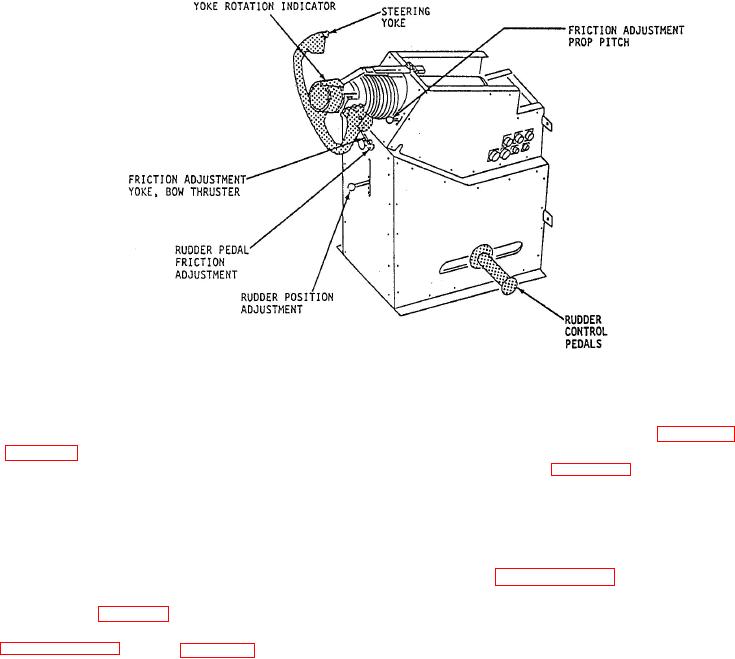
Figure 6-7.-Rudder pedals.
actuator that moves the rudder for that side of the
thruster control system and the associated
craft to the selected position. Figure 6-5 shows the
operational controls, as shown in the shaded areas of
location of the rudder control pedals at the steering
figure 6-5. In the following paragraphs, we will
control station. Figure 6-7 shows a side view of the
briefly describe the major assemblies and components
rudder pedal assembly.
and their functions within the design and operation
of the craft control system.
PEDAL CONTROLS. The control station
Rudder Control System
operator moves the rudders by operating the two
pedals on the rudder control assembly. (See shaded
The function of the rudder control system is to
areas of figs. 6-5 and 6-7.) The rudder pedals pivot on
provide the capability for turning power at the stern
an axle to allow the operator to move the rudders in
of the craft. Figure 6-6 shows the basic configuration
both directions. To move the rudders to full port or
of the rudder control system. (Study and compare
full starboard, the operator pushes the port or
figs. 6-1 and 6-6.) Study figure 6-6 as you read about
starboard pedal forward. This action causes a
the components and their functions.
potentiometer to send a negative (port) or positive
(starboard) electrical signal through the control
There are two rudders mounted vertically across
system electronic package (CSEP) and to the rudder
the trailing edge of each propeller duct. The rudders
actuator, thereby causing the rudder to move left or
are used with the bow thrusters to provide turning
right as directed. The pedal controls are spring-
capability. The function of the rudders is to deflect
loaded to allow them to return to the neutral position
propeller slipstream which, in turn, provides a
after the rudder has moved to the commanded
turning force at the stern of the craft.
position.
CSEP AND RUDDER INTERFACE ASSEM-
Operation of the rudder control system is based on
hydraulic pressure. In fact, a hydraulic pressure
BLY. The function of the CSEP is to control and
system supplies power to both the rudder control
send the command signals initiated by the operator in
system and the propeller pitch control system. There
the control station to the various components in the
is a separate hydraulic system for each side of the
craft control system. The LCAC has two identical
craft, consisting of pumps, valves, actuators, and
CSEPs, labeled CSEP A and CSEP B. Each CSEP has
piping. The control station operator controls the
a single circuit specifically for rudder control. A
rudders by moving the rudder control pedals forward
rudder control signal initiated by the control station
or aft, as required. Movement of a rudder control
operator will be routed through one of these channels
pedal is converted into an electrical signal. The
to the rudder
electric signal, in turn, controls a hydraulic position

